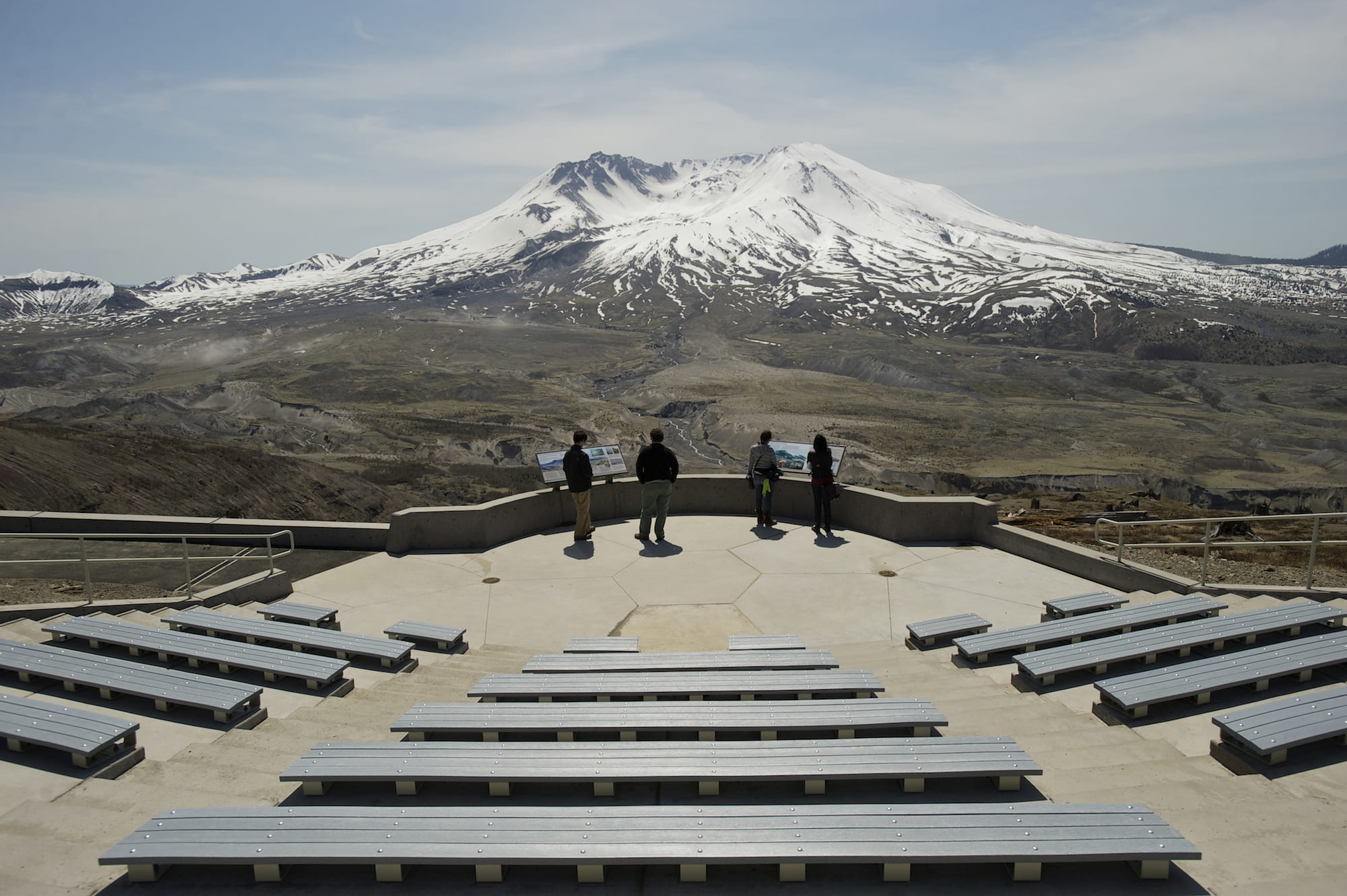Vancouver! Vancouver! This is it!
Most regional volcanic scientists know those words well. So do visitors to the Mount St. Helens Johnston Ridge Observatory, where they’re displayed on an interior wall.
Those were the final words of U.S. Geological Survey scientist David Johnston, moments before he was engulfed by the mountain’s catastrophic blast 32 years ago today.
Johnston was camped just a few miles from the volcano’s north side, where the observatory that bears his name now sits. He was among 57 people killed by the eruption that unleashed widespread destruction — decapitating the formerly cone-shaped mountain, flattening miles of forests and darkening skies overhead.
As Southwest Washington marks the anniversary of the May 18, 1980, eruption, those making the trek to Mount St. Helens can expect to see a few new features at the facilities that surround it this year. A new outdoor amphitheater greets visitors to Johnston Ridge Observatory, along with 51 informational panels and other improvements added since last year. The nearby Mount St. Helens Science and Learning Center at Coldwater will also see plenty of activity today, hosting a volunteer appreciation event.
Mount St. Helens National Volcanic Monument
Visitor facilities within the Mount St. Helens National Volcanic Monument are free of charge today. That includes Johnston Ridge Observatory and the Mount St. Helens Science and Learning Center at Coldwater.
Johnston Ridge: Open from 10 a.m. to 6 p.m., the observatory is located at the end of state Highway 504, about an hour east of Castle Rock.
Coldwater: The newly repurposed facility will host a volunteer-appreciation event and a public open house from 1 to 3 p.m. Coldwater sits off Highway 504 to the north and west of Johnston Ridge, just above Coldwater Lake.
U.S. Forest Service officials hope the gathering is the start of a new life for the repurposed facility, which closed as a visitor center in 2007. Coldwater will also welcome drop-in visitors to take a look around between 1 and 3 p.m. today, said Chris Strebig, a Gifford Pinchot National Forest spokesman.
Both facilities, and others within the 110,000-acre national volcanic monument, are free for visitors on the eruption’s anniversary.
The 1980 eruption stands as a “where were you when” moment, particularly for people who lived in the Northwest at the time. The event forever changed the region’s landscape, and changed modern volcanology, scientists say.
For John Ewert, the eruption punctuated the start of a career in geology. The scientist-in-charge for the Vancouver-based Cascades Volcano Observatory just happened to finish his undergraduate degree in May 1980.
Ewert remembers driving through Minnesota for a field project on the day of the eruption. He remembers looking to the west, wondering if he’d see the massive ash cloud the mountain spewed skyward (he didn’t). But it wasn’t long before Ewert got to see Mount St. Helens up close — his young career brought him to the Northwest later that year.
“It was really serendipity,” Ewert said. “There was lots of work, obviously, to be done.”
St. Helens remains the most active volcano in the Cascades, 30 years after the national monument was created by Congress in 1982. And it still teaches scientists near and far, during active and quiet phases alike.
“St. Helens was, is, and remains a laboratory for us,” Ewert said. “It continues to inform what we do.”




